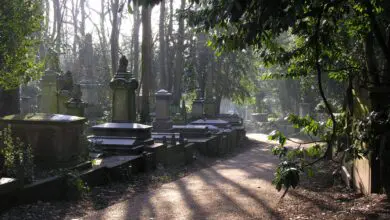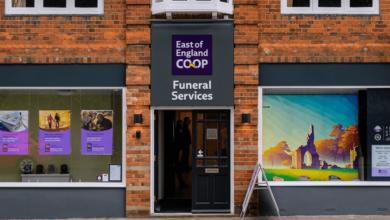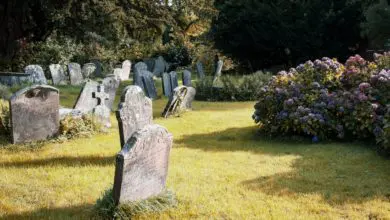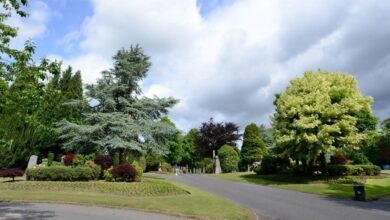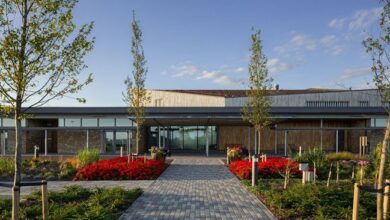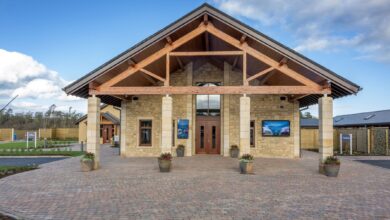A.W. Lymn’s barrows: a legacy in stone
Recounting the moment when Matthew Lymn Rose and his father Nigel first saw the Cambridgeshire barrows, Clarson says, ‘It was like a bolt of lightning’
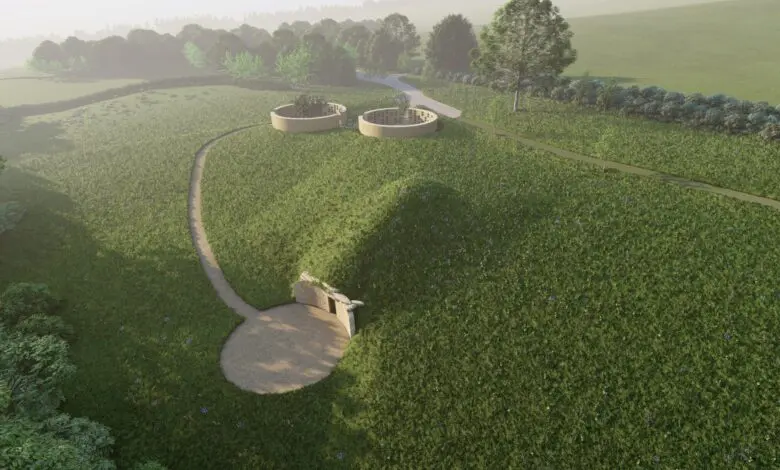
Register to get 1 free article
Reveal the article below by registering for our email newsletter.
Want unlimited access? View Plans
Already have an account? Sign in
In a quiet pocket of the Nottinghamshire countryside, something ancient is being reborn. After a period of delay, family-run funeral provider A.W. Lymn, in partnership with Sacred Stones, is building a new barrow in Calverton. Inspired by Neolithic burial chambers, this stone structure will offer families a place to remember those who have passed – quietly, simply, and in tune with the land.
Pete Clarson, the commercial director at A.W. Lymn, says the idea came from a need for calm and permanence for the bereaved, following Matthew and Nigel Lymn Rose’s visit to one of Sacred Stones’ barrows in Cambridgeshire. “We recognise that families need beautiful places that provide physical and emotional security. People need safe places to contemplate and accept loss.”
Although Gedling Borough Council had granted permission for the site to be turned into a regular cemetery in August 2022, A.W. Lymn elected to resubmit its planning application to include one closed and two open barrows on a small part of the 27-acre cemetery in late 2023.
Recounting the moment when Matthew Lymn Rose and his father Nigel first saw the Cambridgeshire barrows, Clarson says it was “like a bolt of lightning. They had found just the right balance between aesthetic beauty, peace, peaceful security and ‘wonderment’”.
The project has taken time. Although Gedling Borough Council had granted permission for the site to be turned into a regular cemetery in August 2022, A.W. Lymn elected to resubmit its planning application to include one closed and two open barrows on a small part of the 27-acre cemetery in late 2023. That resubmission was then approved by the council last year, but since then they had had plenty of other hold-ups.
“The project as a whole is pretty ambitious and not unduly complex. We have to balance local council requirements with other stakeholders. For example, the county council’s ecology and tree experts,” Clarson explains. “It’s worth noting that we are in no hurry; the Calverton cemetery is a legacy project that will serve many generations of families in Nottinghamshire.” It turns out that this wait led to the improvement of the principal design scheme, with Clarson saying that the delays had delivered unexpected dividends.
Barrows are ancient. Toby Angel, the managing director of Sacred Stones, describes them as stone chambers covered in earth – structures first built in the Neolithic era and later used through the Saxon period. “Barrows vary in scale and shape. Often they reflect the status of those interred and were aligned to the rising sun in mid-summer,” he says.
Designing a barrow isn’t like designing a cemetery. Angel says geometry matters, as does the structural engineering of them – after all, these barrows will allow for visitors to enter them.
The Calverton barrow will do the same, but in a modern context. Clarson and Angel both talk about fostering an atmosphere of peace and calm for visitors. They say: “The barrows are beautiful and provide physical and emotional security. It is important families are drawn to return. We’ve visited numerous barrows and have found them to be uplifting spaces that echo life.”
When we talk about such an ancient practice, it goes without saying that its sustainability factors are a big advantage for the project. All of the stone for the barrows is sourced locally, unlike most memorials which are often imported from Asia. “The barrows provide a ‘net ecological gain’ in that they sit within the countryside and become home to birds and insects,” Angel adds. “Also, much of the build and craftsmanship is performed by hand!”
Designing a barrow isn’t like designing a cemetery. Angel says geometry matters, as does the structural engineering of them – after all, these barrows will allow for visitors to enter them. “Our focus is to view the ‘customer journey’,” he says. “This sounds rather commercial but we need to ensure families are teased to explore the hand crafted space that allows them to engage with the natural environment.”
According to Clarson, the response from the community has been quiet but strong: “We have had enquiries across the local Lymn’s network. In some cases to learn more, but more often to see if they secure a niche. We had been encouraged by Sacred Stones to expect this, and it’s quite humbling.”
It’s hard to say where barrows fit into the future of burial in the UK, but interest is growing.
Some details of the Calverton barrows are still under wraps, and the two companies have agreed to stay hush-hush on the minutiae of the project. “Given the drama and theatre involved in the design and ultimate visitors’ experience, we are keeping them secret for now,” Clarson says.
It’s hard to say where barrows fit into the future of burial in the UK, but interest is growing. Angel shares that Sacred Stones is regularly asked where its next site will be, while its currently operating barrows are also very popular.
What surprises people most about barrows? Clarson says that the answer is pretty subjective. But, having spoken to existing niche owners, they refer to: ‘coming home’, ‘community’ and ‘no longer fearing death knowing they will ultimately come to the barrow’.
In Calverton, something simple and old is being built to last. A stone chamber. A quiet place. A way back to something we’ve always known.


